Publish Time:2022-11-14 08:37:31Source:Luoyang Culture, Radio, Television and Tourism Bureau
【Introduction】:On October 27, National Geographic, an American monthly magazine, released its Best of the World list in late October with 25 breathtaking places for 2023. The Longmen Grottoes is the only destination in China making its way to the list, under the category of "Culture".
On October 27, National Geographic, an American monthly magazine, released its Best of the World list in late October with 25 breathtaking places for 2023. The Longmen Grottoes is the only destination in China making its way to the list, under the category of "Culture".

Screenshot of a relevant post of the official Weibo account of National Geographic
The Best of the World 2023 list was grouped into five categories: "Community", "Culture", "Adventure", "Nature", and "Family", with 25 must-see destinations in total. Among them, the Longmen Grottoes, under the category of "Culture", contain the largest and most impressive collection of Chinese artworks, praised by UNESCO as "the high point of Chinese stone carving" and an "outstanding manifestation of human artistic creativity".

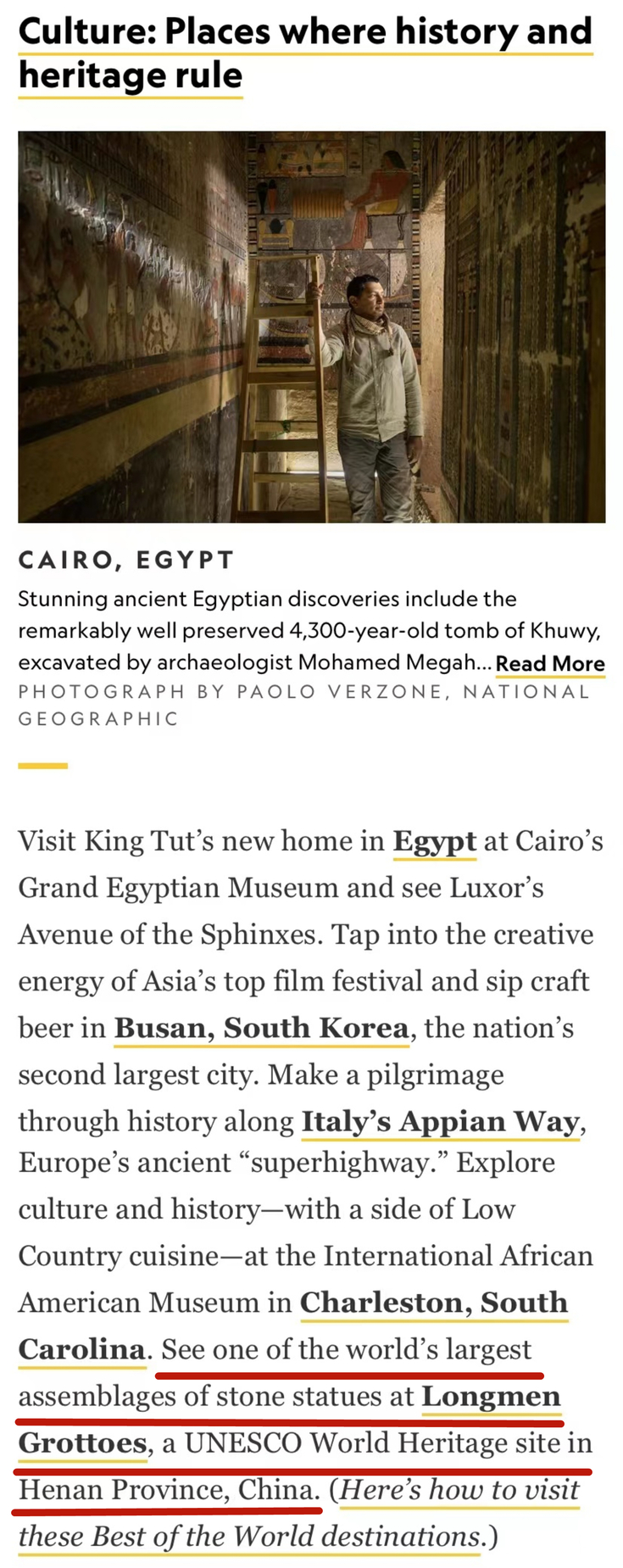
Screenshots of two relevant tweets posted by National Geographic on Twitter
The site of Longmen Grottoes, located in Luoyang in Henan Province, has the largest and most impressive collection of stone carving artworks, praised by UNESCO as "the high point of Chinese stone carving". It is now a World Cultural Heritage site, one of the Major Historical and Cultural Sites Protected at the National Level, and one of China's 5A-level national tourist attractions.
The site was listed as one of the Major Historical and Cultural Sites Protected at the National Level in the first batch, and entitled as one of the National Tourist Attractions in the first batch in 1982. In November 2000, it was included in the World Heritage List by UNESCO. In January 2006, it was selected by the Central Guidance Commission on Building Spiritual Civilization of the Communist Party of China, the Ministry of Housing and Urban-Rural Development of the People's Republic of China, and China National Tourism Administration as a National Civilized Scenic Area. In May 2007, it became one of the 5A-level national tourist attractions in the first batch.
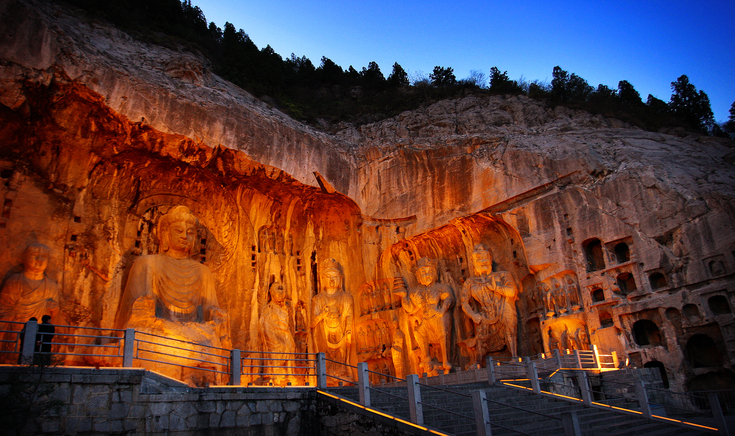
The Longmen Grottoes contain four sections, including the West Hill Cilff, the East Hill Cilff, Xiangshan Temple and Bai Juyi Memorial Park.
The history of the Longmen Grottoes dates back to the late Northern Wei Dynasty, shortly after Emperor Xiaowen moved his imperial capital to Luoyang. With additional construction works accomplished in the following dynasties including the Eastern Wei Dynasty, the Western Wei Dynasty, the Northern Qi Dynasty, the Sui Dynasty, the Tang Dynasty, and the Five Dynasties, the Longmen Grottoes nowadays comprise more than 2,300 caves and niches carved into the steep limestone cliffs over a 1-kilometer-long stretch, which harbor almost 110,000 Buddhist stone statues and 2,800 carved inscriptions.
Located in the south of this ancient capital, the site is named "Longmen" (literally meaning Dragon's Gate) because emperors used to regard themselves as true dragons and sons of Heaven on earth.
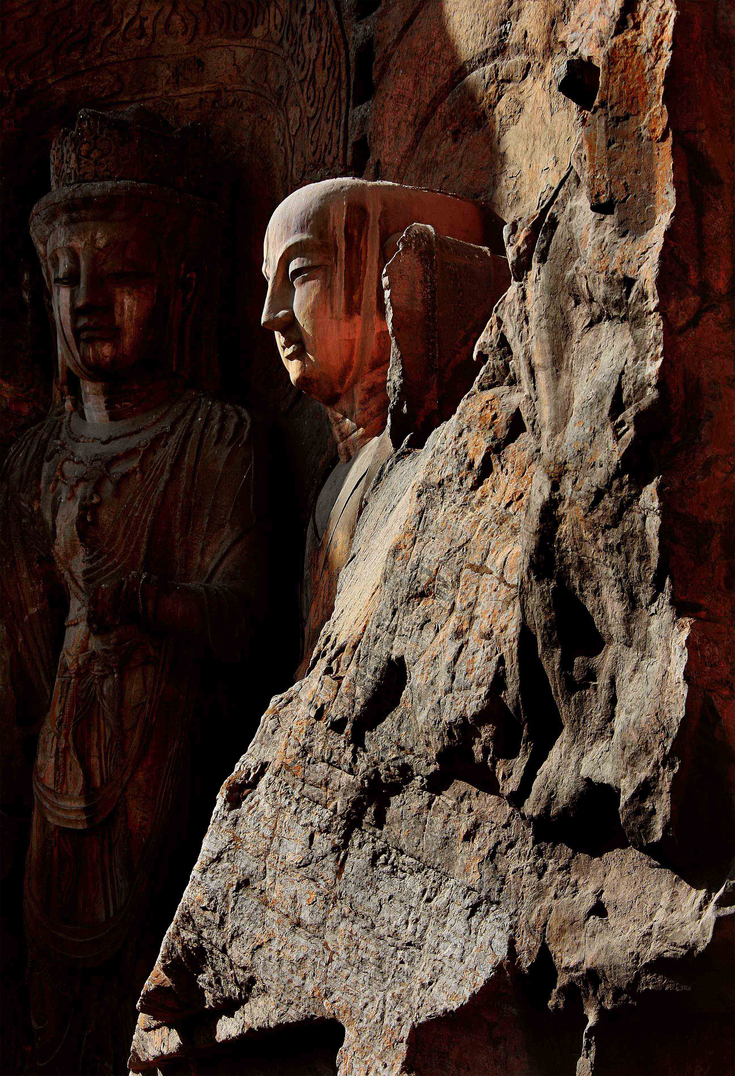
A statue of Ānanda [Photo by Zeng Xianping]
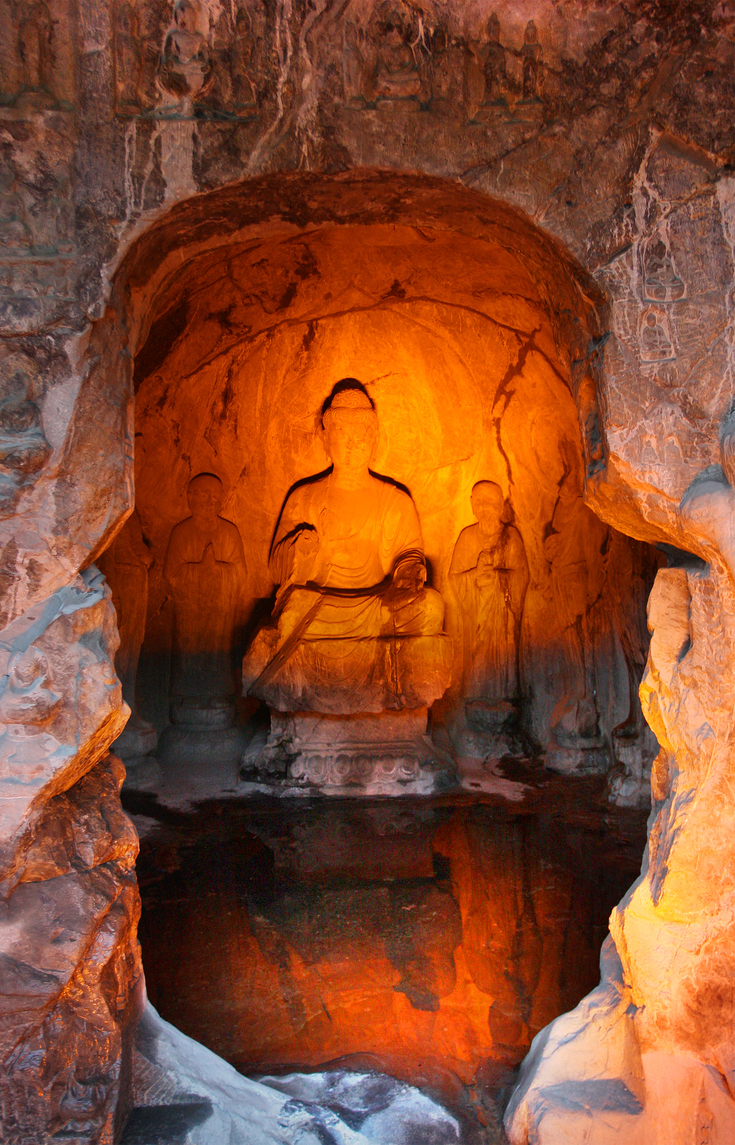
A Buddhist niche illuminated by lights [Photo by Zeng Xianping]
Having served as a major site for royal families and nobles in the Northern Wei and Tang dynasties to make great vows and invest in statue carving, the Longmen Grottoes reflect the wills and behaviors of royal families, full of religious overtones. Among the caves carved and excavated in the Northern Wei Dynasty, Guyang Cave, Middle Binyang Cave, Lotus Cave (Lianhua Cave) and Shiku (Grotto) Temple are the best representatives. Housing a collection of stone statues of nobles and officials in the early days of the Northern Wei Dynasty after the relocation of the capital to Luoyang, Guyang Cave demonstrates the strong belief of the then upper class in Buddhism. These stone statues, varying in shape and category, serve as vital records of the integration of traditional Chinese culture and foreign civilization.
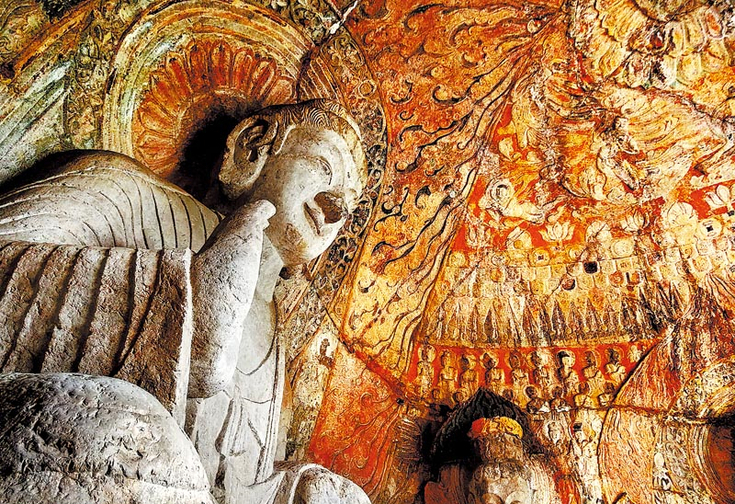
Colorful mural paintings in Middle Binyang Cave [Photo by Zeng Xianping]
Carvings of Lushena Buddha's Shrine in the Longmen Grottoes, engraved in the Tang Dynasty, are famous for their grand and magnificent style. Fengxian Temple of Longmen Grottoes is the largest shrine on the cliff. With the giant and spectacular Lushena Buddha at the center, the temple is constructed as a shrine at the cliff based on the description in Avatamsaka Sutra. In Fengxian Temple, the peaceful ideal world of Buddhism is perfectly depicted by a great number of vivid and artistic sculptures. The temple itself is one of the greatest achievements of stone carvings in the Tang Dynasty, the giant statue of Lushena Buddha would definitely be one of the most outstanding treasures of Chinese stone carving art.

A panoramic photo of Fengxian Temple of the Longmen Grottoes [photo by Zeng Xianping]
The site has been remaining still and almost intact for centuries spanning various dynasties, the site of the Longmen Grottoes is unmatched for its good location and beautiful scenery nearby. The site, from different perspectives, records the development and changes in politics, economy, religion, culture and other aspects of ancient China with a variety of graphic and textual materials elaborating on an abundance of relics of the site, contributing greatly to the innovation and growth of grotto art in China.
E-Mail Login|Contact Us|Careers|Legal disclaimer
世界旅游城市联合会版权所有 备案号:京ICP备19050424号-1
Our legal counselors: lawyer Song Yunfeng & lawyer He Wen,
from Dacheng Law Offices